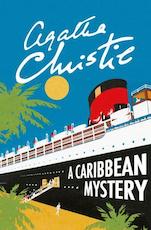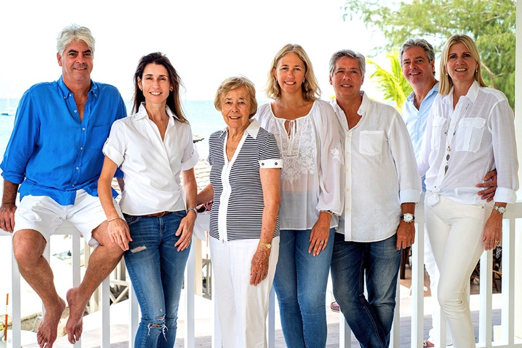
Poirot Score: 70
A Caribbean Mystery
☆☆☆
Reasons for the Poirot Score
Miss Marple is rarely far away from Southern England and her home village of St Mary Mead, but in this novel she is enjoying a recuperative holiday in the West Indies thanks to her nephew Raymond West. The setting gives glamour, there is plenty of humour and Mr Rafiel is a great character, somewhere between Mr Venables of Pale Horse and Poirot himself. The set-up for the first murder is excellent. There is one major clue, and a reader who understands it may be fairly certain that she has solved the puzzle, but several solutions are plausible, the clueing overall rather thin and few misdirections. A most entertaining read and a reasonable, but not an excellent, whodunnit.
Click here for full review (spoilers ahead)
Trivia
Dedication
To my old friend John Cruickshank Rose with happy memories of my visit to the West Indies
Evil under the Sun was dedicated to ‘John’ and we speculated that it referred to John Cruikshank Rose and wrote about him in the ‘Trivia’ to that novel (on this website). Christie visited Barbados in the West Indies in 1956 and stayed at the Coral Reef Club that may have been a model for the Golden Palm Hotel. The 1989 TV dramatisation of A Caribbean Mystery was filmed at the Coral Reef Club and the owners in 1989 – Edward (‘Budge’) and Cynthia O’Hara – remembered when Christie had stayed. They had only arrived in Barbados themselves earlier that year, on honeymoon, and taken on managing the hotel that they finally bought. The family still runs the hotel.

Brides in the bath
If a man gets a formula that works – he won’t stop. He’ll go on.’ ‘Brides in the bath – eh?’
Chapter 1
The Brides in the Bath case grabbed the headlines of the British Press in 1915 at the time of Zeppelin raids and the dreadful battles in Flanders. George Joseph Smith was found guilty of murder on June 1st and hanged on 13th August. Christie was then 24 years old.
The case is significant in English criminal law for several reasons: the way in which Smith was first suspected; the investigation into how the deaths occurred; the use of evidence in court concerning related deaths; and Smith’s arrest. The way in which Smith was first suspected clearly inspired Christie in developing the plot of A Caribbean Mystery.
George Smith was born in London in 1872. In 1898, under the pseudonym of George Oliver Love, he married Caroline Thornhill. It was his only legal marriage and was never dissolved. The two embarked on a career of thieving. Caroline Thornhill was caught and convicted and later gave evidence that led to Smith’s conviction. He served his sentence but did not return to live with Thornhill. Instead he developed a thieving modus operandi, working alone, in which he ‘married’ a woman under a false name, stole her money and disappeared. His method however became more sinister.
Using the name Henry Williams, George Smith was living as the husband of ‘Bessie’ Mundy. On July 13th 1912 whilst they were living at Herne Bay ‘Williams’ claimed to have found Bessie dead, drowned in the bath as a result of a fit. There were no signs of violence on her body and the death was not considered suspicious. Bessie Mundy’s considerable savings of £2500 (worth now about £250,000) passed by her will to the man she had believed to be her lawful husband.
In 1913, Alice Burnham living in Blackpool was found dead by her apparent husband, a George Smith. It seemed that she had drowned in the bath. No signs of violence were found on her body. George Smith benefitted by the life insurance that he had taken out on her: £500.
In January 1915 a woman known as Margaret Elizabeth Lloyd and living in Highgate, London, was found, by her apparent husband John Lloyd, drowned in the bath. The coroner, Dr Bates, carried out the autopsy and apart from a small bruise on her left elbow there were no signs of violence on her body. John Lloyd stood to gain the life insurance of £700 that had been taken out on Margaret Lloyd shortly before her ‘marriage’.
None of these deaths was linked with the others until Joseph Crossley, who had been the landlord of Alice Burnham and George Smith in Blackpool, noticed the similarities between Alice Burnham’s death and the reports in the newspapers of the death of Margaret Lloyd. He sent newspaper cuttings describing the two deaths to Detective Inspector Arthur Neil of Scotland Yard.
On investigation Arthur Neil found that Margaret Lloyd had signed a will, three hours before her death, giving all her money to John Lloyd. Neil was puzzled by how Margaret Lloyd had drowned, given the small size of the bath. Neil had enough evidence to arrest Smith/Lloyd (whom he strongly suspected of being one and the same person) on suspicion of murder – and for bigamy. But how to find him? Neil reasoned that Smith would visit his lawyer in order to collect the money if the insurance company believed that the insurance claim was genuine. Neil therefore asked the coroner, Dr. Bates, to issue a favourable report to the insurance company, which he did. Smith’s lawyer’s office was watched continually. On February 1st Smith approached his lawyer’s office and was arrested.
The newspapers dubbed the cases ‘the brides in the bath’ and their reports led to a Herne Bay police officer contacting Neil about the case of Bessie Mundy. Smith/Lloyd was identified as the same person as ‘Henry Williams’. There was a major problem for the police, however, in pursuing a case of murder against Smith: there was no significant evidence on any of the bodies of violence. How could Smith have murdered the three women?
Bernard Spilsbury, a Home Office pathologist, was asked to examine the causes of death in the three women. He had all three bodies exhumed. He carefully considered the descriptions of the positions of the women in the baths when first seen by a doctor, he made measurements of the three baths and the three women. He doubted whether the women could have accidentally drowned given the small sizes of the baths. He then undertook a series of experiments using female divers and a bath. He already suspected that the mode of murder was the sudden and unexpected pulling upwards of the legs of the victims while in the bath with the effect that the victim’s head is suddenly submerged. Spilsbury carried out this manoeuvre on an unsuspecting diver. She lost consciousness immediately on submersion without inhaling much water. It took some time to resuscitate her.
Smith was tried for the murder of Bessie Mundy. English Law at the time did not allow for a person to be tried for more than one murder at a single trial. The legally most significant aspect of the trial was the question of whether evidence from the cases of Alice Burnham and Margaret Lloyd were admissible as demonstrating a ‘system’ and potentially adding weight to the evidence that Smith murdered Mundy. Smith’s defence counsel was Sir Edward Marshall Hall. His attempts to disallow such evidence failed. Such evidence was deemed admissible, amongst other reasons, if it were used to show that the defendant had relevant knowledge or to rebut the defence of accident. The transcript of the trial shows Marshall Hall’s vigorous attempts to defend his client, for example in cross-questioning Spilsbury in minute detail about the size and shape of the bath, and of the victim. A bath was brought into the court room and Marshall Hall carried out measurements in front of the jury. In the end though the jury took only 20 minutes to return a verdict of ‘guilty’.
The aspects of the case that Christie makes use of is the idea that a murderer, under a variety of assumed names, repeats the same method of making a wife’s murder look like accident (or suicide), and that at some stage someone notices the similarities between the different deaths and begins to suspect murder.
… and The Big Four
Detective Inspector Arthur Neil (see ‘Brides in the Bath’ above) became, from 1919, one of the four Superintendents who were in charge of criminal investigations at Scotland Yard. Collectively they were known as The Big Four which may have given Christie the idea for the title of her novel of that name published in 1927.

